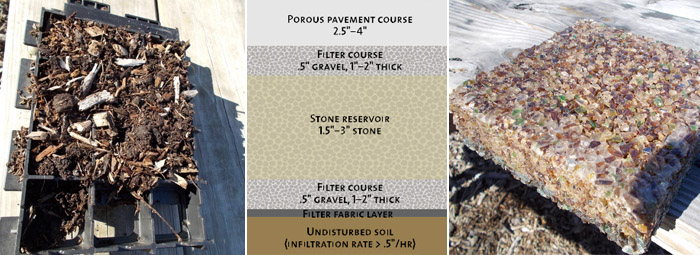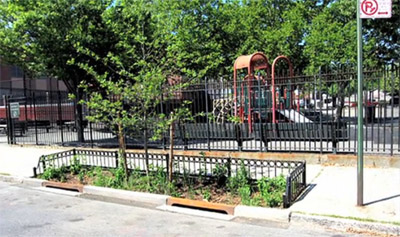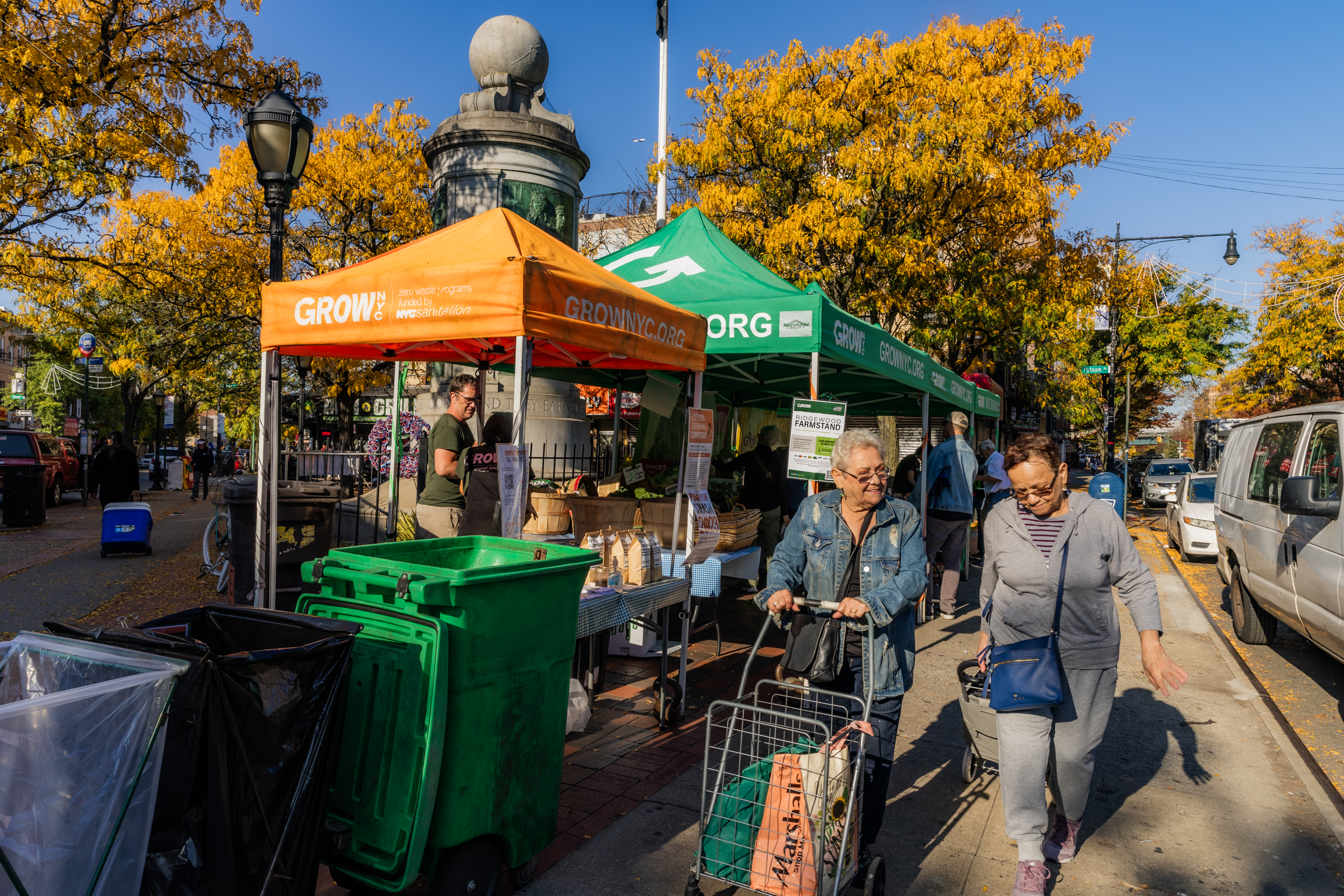Permeable Pavement
Permeable pavement is designed to allow percolation or infiltration of stormwater through the surface into the soil below where the storm water is naturally filtered and pollutants are removed. Permeable concrete, permeable asphalt and other engineered systems are used depending on the amount and type of foot or vehicle traffic. In contrast, normal pavement is an impervious surface that sheds rainfall and associated surface pollutants forcing water to run off paved surfaces directly into nearby storm drains and then potentially contribute to Combined Sewage Overflows.

Because permeable pavement is not as solid as impermeable pavement and cannot bear the same load, it should not be used on heavily trafficked areas, but should be limited to parking or foot traffic. It should not be placed at the end of slopes in order to minimize flooding. Existing soil underneath the permeable pavement should have an infiltration rate of 0.5 in. per hour.
Some types of permeable pavement like geogrids can be installed by a do it your-selfer. Follow manufacturer’s instructions. Paving blocks that are permeable can also be easily installed by a homeowner or gar-dener while other types of permeable pav-ing like permeable concrete or permeable paving using aggregates like crushed glass will require a contractor.
Enhanced Tree Pits
An enhanced tree pit collects rainwater by diverting runoff from the street into a cut into the curb. Enhanced tree pits are specially engineered with soils and native plant species to absorb water and filter associated pollutants. In some enhanced tree pits, storage chambers hold additional runoff, available for plant uptake or ground water recharge.

To be most effective, an enhanced tree pit will include an underground storage tank to increase the amount of stormwater re-tained. Also amending the soil to accom-modate the inflow of large amounts of water is important for the enhanced tree pit to work properly. Both of these im-provements will require heavy equipment as well as permits and approvals.
A home-owner or a community gardener that has a tree in their garden could direct rainwater that runs along an impervious surface in the garden or backyard toward that tree as a simple do it yourself project. As with all of the stormwater management tech-niques some allowance has to be made for overflow in heavy rains.
Downspout Planters
A downspout planter places plants along or at the end of a downspout to capture the water before it enters the sewer. Downspout planters range from very simple planters on the ground to one or more planters along the downspout. Rainfall is captured by the planter allowing for infiltration and capture of pollutants. 
It can be as simple as placing a large pot or planter at the bottom of or next to your downspout. A planter box will last longer if it is lined with plastic as the soil will tend to be most and will rot much quicker that a normal planter. Plastic lumber is an option as it will last indefinitely. An overflow outlet is important as the planter will be close to the building and could cause moisture problem if the overflow is not directed away from the building.
Downspout planters can also be installed somewhere along the downspout to slow down the flow of water, to act as a bio-filter or to take advantage of vertical planting options. An inline planter should be properly secured considering the weight of moist soil and if it will be inaccessible, low maintenance plants like grasses will work best.





